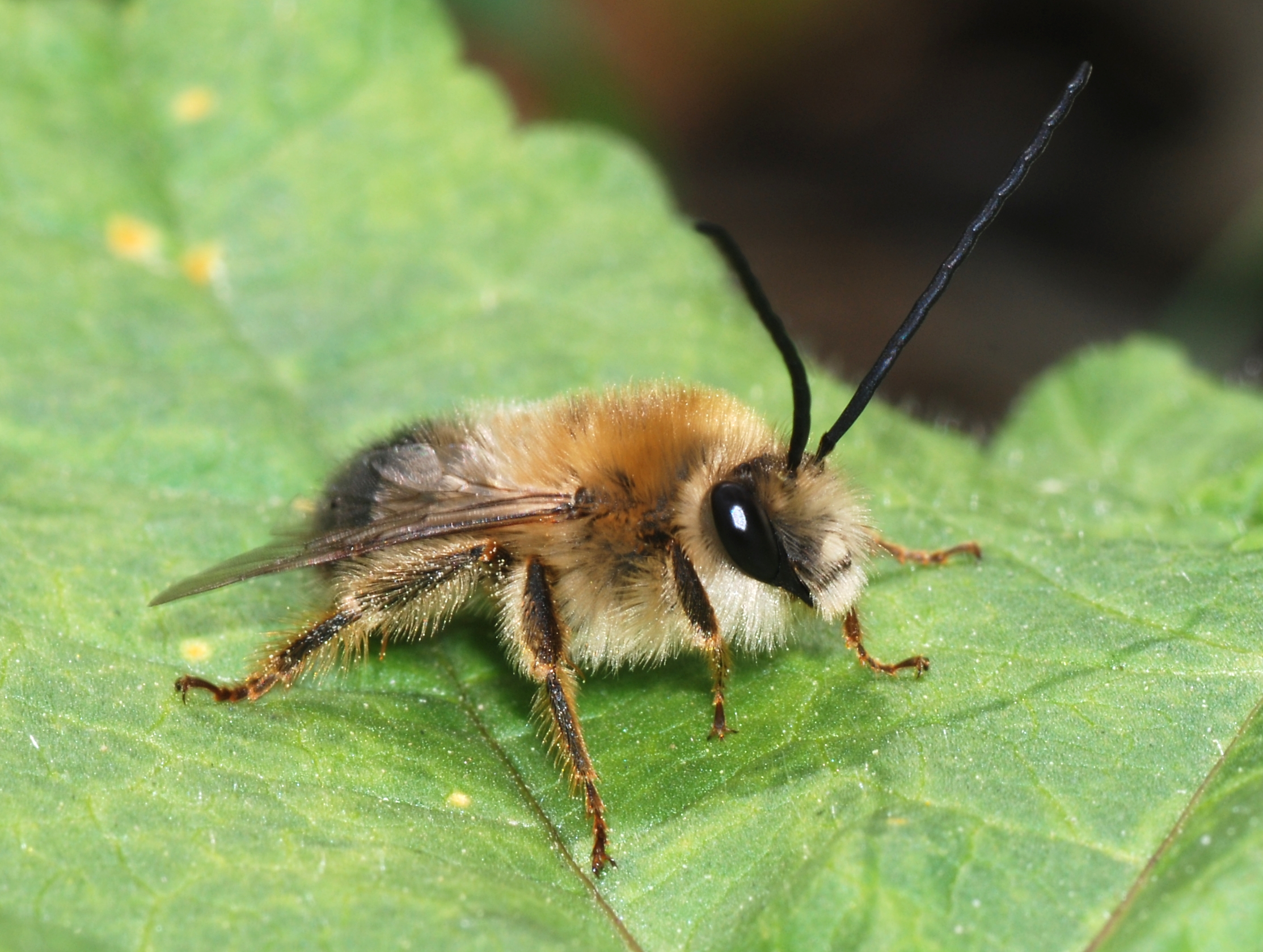- Eucerini
Taxobox
name = Eucerini

image_width = 250px
image_caption = Male "Eucera longicornis "
regnum =Animal ia
phylum =Arthropod a
classis =Insect a
ordo =Hymenoptera
superfamilia =Apoidea
familia =Apidae
subfamilia =Apinae
tribus = Eucerini
subdivision_ranks = Genera
subdivision = Over 30, see textThe Eucerini is the most diverse tribe in the family
Apidae , with over 32 genera worldwide that were previously classified as members of the familyAnthophoridae . All species are solitary, though many nest in large aggregations, and it is also occasionally possible to find large "sleeping" aggregations of males. Most, but not all, genera are distinctive in the unusually long male antennae from which the tribe derives its name ("eucer-" means "true horned"). They are most diverse in theWestern Hemisphere .The classification within the tribe is rather chaotic, as many of the genera are small and poorly-characterized, with the bulk of species (~500) in only 5 genera. This is a group in serious need of a thorough taxonomic overhaul, and the fusion of many genera would likely result (the most recent revision in 2000 eliminated 7 genera).
Genera
* "
Agapanthinus " LaBerge, 1957
* "Alloscirtetica " Holmberg, 1909
* "Canephorula " Jörgensen, 1909
* "Cemolobus " Robertson, 1902
* "Cubitalia " Friese, 1911
* "Eucera " Scopoli, 1770
* "Eucerinoda " Michener & Moure, 1957
* "Florilegus " Robertson, 1900
* "Gaesischia " Michener, LaBerge & Moure, 1955
* "Gaesochira " Moure & Michener, 1955
* "Hamatothrix " Urban, 1989
* "Lophothygater " Moure & Michener, 1955
* "Martinapis " Cockerell, 1929
* "Melissodes " Latreille, 1829
* "Melissoptila " Holmberg, 1884
* "Micronychapis " Moure & Michener, 1955
* "Notolonia " Popov, 1962
* "Pachysvastra " Moure & Michener, 1955
* "Peponapis " Robertson, 1902
* "Platysvastra " Moure, 1967
* "Santiago" Urban, 1989
* "Simanthedon " Zavortink, 1975
* "Svastra " Holmberg, 1884
* "Svastrides " Michener, LaBerge & Moure, 1955
* "Svastrina " Moure & Michener, 1955
* "Syntrichalonia " LaBerge, 1957
* "Tetralonia " Spinola, 1839
* "Tetraloniella " Ashmead, 1899
* "Thygater " Holmberg, 1884
* "Trichocerapis " Cockerell, 1904
* "Xenoglossa " Smith, 1854References
*C. D. Michener (2000) "The Bees of the World",
Johns Hopkins University Press .
Wikimedia Foundation. 2010.
